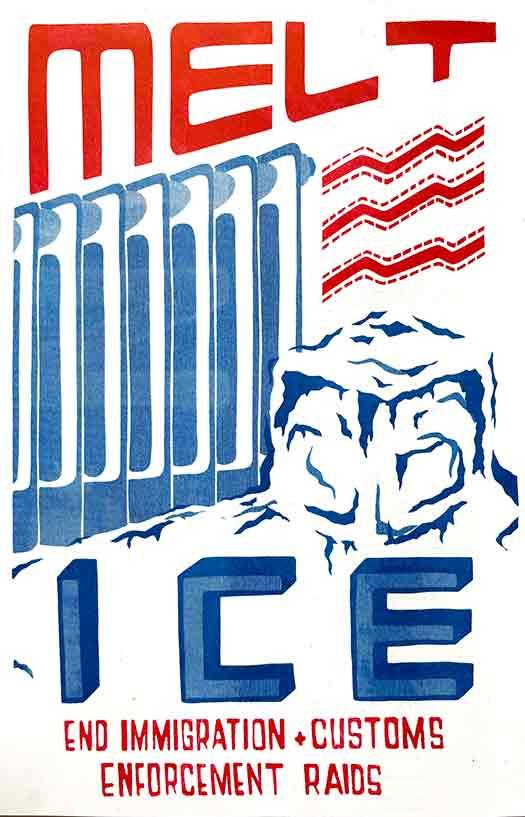Unveiling ICE Operations: A Fresh Approach to Federal Transparency and Accountability
The recent legislative initiative, known as the Melting ICE Transparency Act, seeks to enhance public oversight of Immigration and Customs Enforcement (ICE) by compelling greater disclosure of its activities. Advocates contend that this bill will illuminate previously concealed enforcement actions, including detention procedures, internal reviews, and priority-setting, thereby fostering stronger accountability. Conversely, detractors warn that the bill’s promises of openness may be undermined by the complex realities of ICE’s involvement in classified investigations and sensitive judicial processes.
Experts in law emphasize the challenges inherent in balancing transparency with national security imperatives. Among the primary issues are:
- The judiciary’s interpretation of disclosure mandates when classified information is at stake
- The likelihood of increased legal disputes challenging ICE’s adherence to the bill
- The difficulty of holding ICE accountable without jeopardizing active investigations
| Dimension | Proponents’ Perspective | Opponents’ Reservations |
|---|---|---|
| Transparency | Vital for democratic oversight and trust | Risk of exposing sensitive operational tactics |
| Judicial Interpretation | Ensures legal compliance and fairness | Ambiguities may hinder effective enforcement |
| Public Confidence | Strengthened through openness | Could erode if implementation falters |
Judicial Challenges in Revealing Federal Agents During Court Proceedings
Legal analysts express skepticism regarding the real-world effects of legislative attempts to disclose the identities and roles of federal agents involved in immigration enforcement once cases reach the courtroom. While the intent is to promote transparency and accountability, courts often exercise discretion to withhold such information, especially in cases involving sensitive or high-profile matters. This ongoing tension between safeguarding law enforcement methods and protecting defendants’ rights remains a focal point of debate among legal professionals.
Key concerns include:
- The danger of compromising active investigations by revealing operatives prematurely
- Potential threats to the safety and privacy of federal agents exposed publicly
- Inconsistent application of unmasking rules across different judicial districts
| Factor | Possible Consequence | Expert Assessment |
|---|---|---|
| Judicial Discretion | Varied standards for disclosure | Major constraint on transparency |
| Agent Security | Increased vulnerability with exposure | Necessitates protective protocols |
| Public Transparency | Greater trust if managed well | Desirable but difficult to achieve |
Civil Liberties Groups Call for Robust Legal Guardrails
Civil rights organizations and legal experts are voicing concerns over the absence of clear, enforceable standards in the proposed legislation aimed at increasing transparency around ICE’s federal enforcement activities. While the bill intends to subject agencies like ICE to heightened judicial scrutiny, vague language risks leaving essential civil liberties vulnerable, particularly when sensitive intelligence is involved. Advocates stress the importance of explicit guidelines that safeguard due process and privacy without obstructing legitimate law enforcement efforts.
Core recommendations from these groups include:
- Clear criteria defining when and how federal information should be disclosed to courts and the public
- Independent oversight bodies to monitor and prevent abuse of enforcement powers
- Protections against retaliatory actions targeting marginalized communities
- Regular transparency reports detailing compliance and any violations to ensure accountability
| Primary Concern | Associated Risk | Advocate’s Solution |
|---|---|---|
| Ambiguous Disclosure Rules | Unchecked federal surveillance and overreach | Explicit legal standards and definitions |
| Limited Judicial Oversight | Potential lack of accountability | Creation of independent review panels |
| Impact on Vulnerable Communities | Disproportionate targeting and harm | Enhanced transparency and community engagement |
Legislative Efforts to Strengthen Oversight Face Implementation Hurdles
Policymakers across the political spectrum are advocating for stronger oversight mechanisms in response to growing concerns about inconsistent enforcement of recent transparency reforms by federal agencies. Although the new bill incorporates provisions aimed at increasing openness, ambiguities in judicial interpretation and operational procedures within federal courts cast doubt on its effectiveness. Critics warn that without robust enforcement tools, the legislation risks being largely symbolic rather than transformative.
Supporters highlight several key features intended to improve accountability, such as:
- Compulsory public disclosures of enforcement activities within specified timeframes
- Independent oversight committees responsible for quarterly evaluations of agency compliance
- Strengthened whistleblower protections to encourage reporting of internal misconduct
| Component | Anticipated Benefit | Implementation Challenge |
|---|---|---|
| Public Reporting | Enhances transparency and public awareness | Ensuring data accuracy and timely submission |
| Oversight Panels | Strengthens accountability and compliance | Maintaining panel independence from political pressures |
| Whistleblower Safeguards | Promotes internal correction of abuses | Establishing effective legal protections and enforcement |
Final Thoughts on the Future of ICE Transparency Legislation
The ongoing discourse surrounding transparency and accountability within Immigration and Customs Enforcement underscores a growing demand for federal agencies to reveal their operational practices. The proposed legislation to “unmask” ICE activities reflects this pressure, yet critical uncertainties remain about how courts will apply these new rules. As the legislative process unfolds, the effectiveness of this initiative will hinge on its ability to overcome judicial challenges and deliver the openness that lawmakers, advocates, and the public are increasingly calling for.













